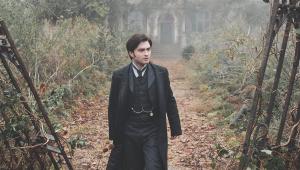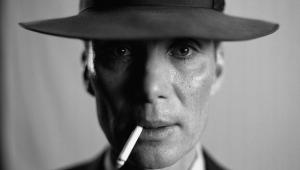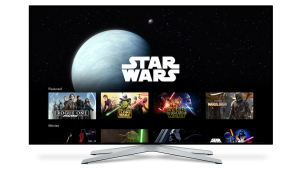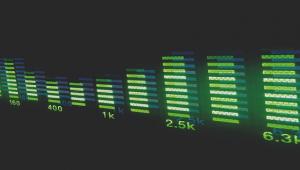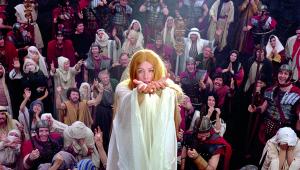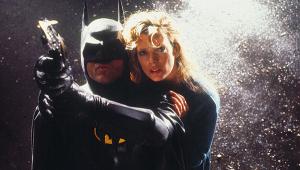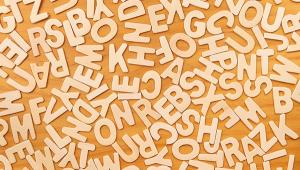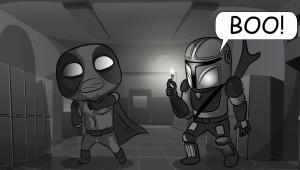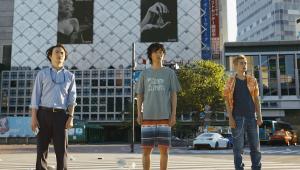The joys of reading a good movie...

What's your favourite moment in Predator? Is it Dutch and Dillon's unforgettable bicep-bulging handshake? Or the scene where the surviving members of the team unleash their firepower on the jungle following Blain's death? Or what about the final act, where Dutch throws a spear straight through the Predator's head as it flees to its spacecraft, hitting something in the vessel in the process and causing it to explode?
'Wait a minute,' you're thinking, 'that's not what happened at the end of Predator.' Well spotted. But while it isn't how the film ends, it is how the climax plays out in Paul Monette's 1987 novelisation, and is one of many differences between movie and book – the most notable probably being that, in the novelisation, the titular creature isn't an invisible alien hunting people for sport, but is instead an otherworldly shape-shifter dissecting the humans it kills in order to understand how we function.
I still remember an annoying classmate at the time boasting that he'd snuck into a cinema screening of Predator (we were all underage back then) and regaling us with details he'd evidently pulled from the novelisation. Naturally, when the rest of us finally got to see the movie on VHS, we discovered he'd been fibbing.
So why did this plot overhaul happen? Obviously a Predator novelisation was knocked up so it would be in stores at the same time as the film was in cinemas, and poor Paul Monette was working with an early script that was significantly revised (for the better) on its way to the silver screen.
Predator is far from the only film novelisation to diverge from its source material. Consider, for instance, William Kotzwinkle's take on family film classic E.T. the Extra-Terrestrial, a substantial part of which is told from the titular creature's point of view – and even has the alien falling in love with Elliot's mother (who it dubbed 'Willow Creature').
And then there's James Kahn's adaptation of Return of the Jedi, where, during the visit to Dagobah, the ghost of Obi-Wan Kenobi tells Luke all about his fateful final fight with Anakin. This left a generation of young fans picturing how awesome that scene would have looked on the bigscreen, and what played out in our heads was far more exciting than what George Lucas finally gave us in 2005’s Revenge of the Sith.
Novelisations can also prove handy when it comes to circumventing censorship. If you've ever watched Hammer's The Terror of the Tongs (included in Indicator’s recent Hammer: Volume Three – Blood & Terror Blu-ray boxset) and wondered what was actually happening during Helena Sale's death scene before the censors got stuck in (especially as the snipped footage is now believed lost), you can track down a copy of Jimmy Sangster's 1962 novelisation and read all the grisly details.
Movies on the go
The glory days of the film novelisation are long behind us, though. Before home video really took off, they were the only way of revisiting your favourite flicks whenever you wanted to. Now, rather than packing a book, you can download E.T. to your smartphone or tablet, and not have to worry about him trying to woo middle-aged women.
But I'll always have a fascination with film novelisations – both the good and the bad – for offering a glimpse of alternate versions of stories that we already think we know inside and out. If you ever see me lurking in your local charity shop, you'll know what I'm hunting for.
Do you have a favourite movie novelisation?
Let us know: email [email protected]
 |
Home Cinema Choice #351 is on sale now, featuring: Samsung S95D flagship OLED TV; Ascendo loudspeakers; Pioneer VSA-LX805 AV receiver; UST projector roundup; 2024’s summer movies; Conan 4K; and more
|



